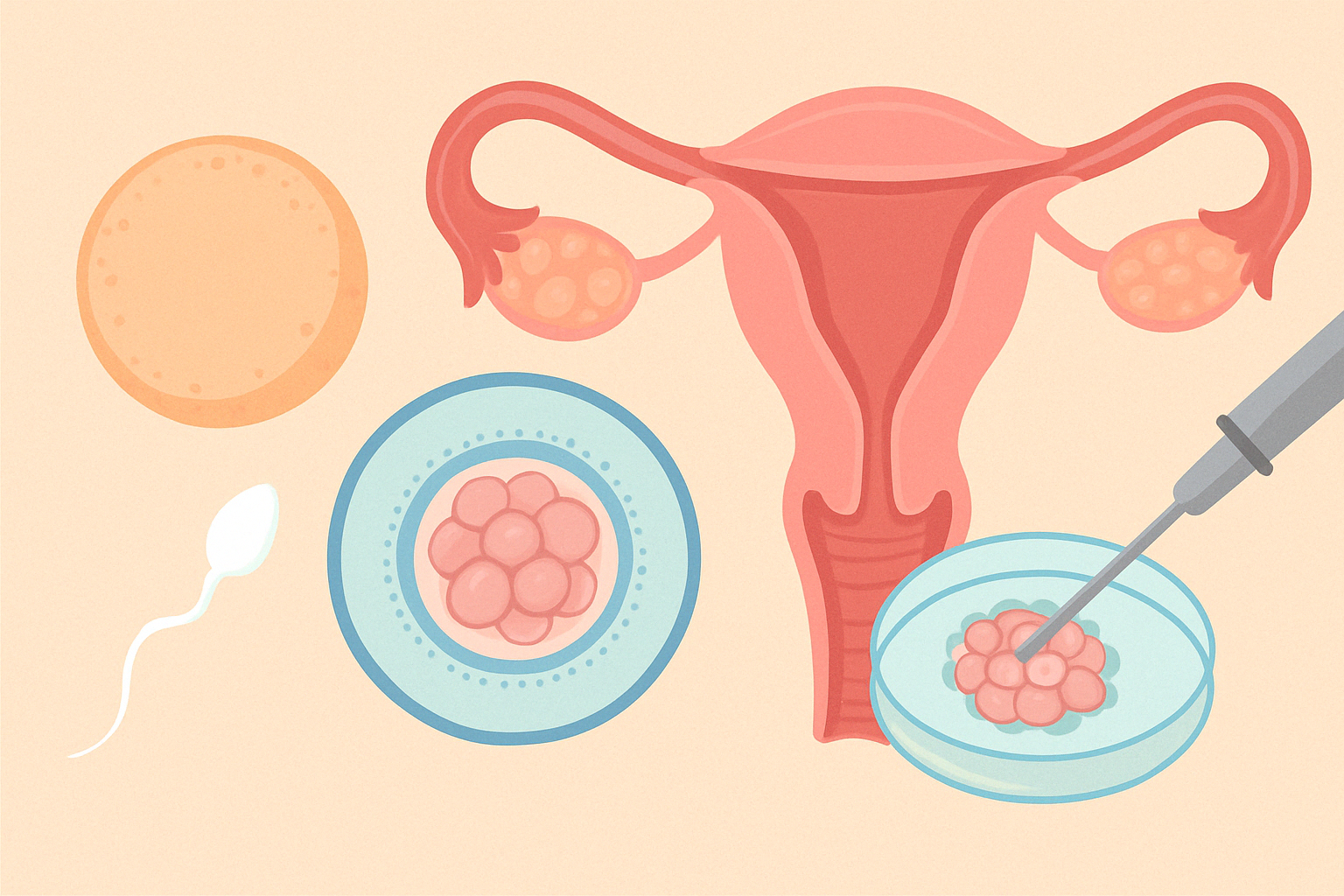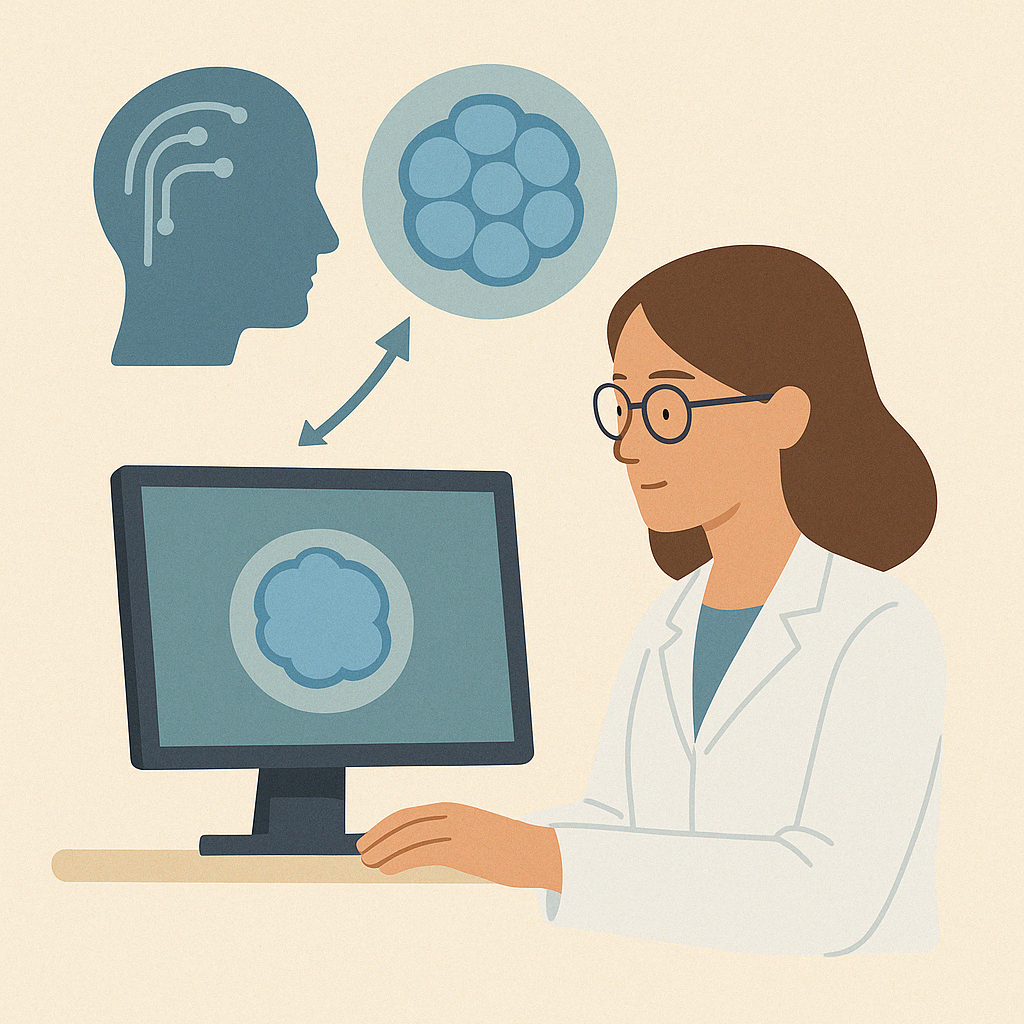In vitro fertilization (IVF), also known as in vitro fertilization (IVF), is an assisted reproductive technology in medicine. This method involves fertilizing a female reproductive cell (egg) with a male reproductive cell (sperm) outside the body, in a laboratory environment, and implanting the resulting embryo into the uterus. Developed for couples who cannot achieve pregnancy naturally, this method has become one of the most commonly used and effective techniques in infertility treatment today.
History of IVF and the First Birth Worldwide
The IVF process first emerged in the 1930s in the USA with studies on animals. Gregory Pincus was one of the pioneers in this field, claiming to have fertilized rabbit eggs in a laboratory setting. In the 1940s, Rock and Menkin worked on human eggs obtained through surgical procedures and observed some signs of fertilization; however, these attempts did not result in birth. Various scientists conducted studies on human IVF throughout the 1950s and 60s, but due to technical shortcomings and insufficient scientific knowledge, success could not be achieved.
The real turning point came in 1968 with the collaboration of British embryologist Robert Edwards and gynecologist Patrick Steptoe. Thanks to this collaboration, they focused on fundamental steps such as egg maturation, sperm preparation, fertilization, and embryo transfer in the laboratory environment, and many technical challenges were overcome over the years.
The nurse-technician Jean Purdy also contributed to this process. After ten years of scientific and clinical studies, on July 25, 1978, a healthy baby girl named Louise Brown was born in Oldham, England, marking the first successful IVF birth in the world. This development is considered revolutionary in modern reproductive medicine.
History of IVF and the First Birth in Turkey
IVF applications began to develop in Turkey in the late 1980s, and the first successful birth occurred on April 18, 1989 in Izmir. This birth took place at the IVF Center within the Department of Obstetrics and Gynecology, Ege University, under the leadership of Prof. Dr. S. Aricioglu, resulting in the birth of twin babies, Evren and Ece Erol. This birth is considered one of the turning points for assisted reproductive technologies in Turkey.
Ege University IVF Center
The Ege University IVF Center is one of the first IVF centers established in Turkey within public universities. Established in 1988, the center spearheaded the spread of IVF applications nationwide following the first birth in 1989. The center carries out not only treatment services but also research and educational activities.
Ege University IVF Center continues to provide active service with its advanced laboratory infrastructure and multidisciplinary expert staff.

Image depicting a baby girl and a baby boy in swaddling clothes born at Izmir Ege University Hospital. (AI-generated.)
Conditions for IVF Application
The IVF method is recommended for individuals and couples who cannot achieve pregnancy under certain conditions. These conditions include blocked fallopian tubes, reduced egg reserve due to advanced age, low sperm count and quality, endometriosis, and unexplained infertility.
IVF is also preferred for couples who have not achieved results from previously tried methods such as insemination.
IVF Treatment Process and Stages
IVF treatment generally consists of four main stages:
- Ovarian Stimulation: The woman's ovaries are stimulated with hormone injections to produce multiple eggs.
- Egg Retrieval (OPU): The mature eggs are collected under anesthesia.
- Fertilization and Embryo Development: The collected eggs are fertilized with sperm in a laboratory setting. This process can be done using classic IVF or intracytoplasmic sperm injection (ICSI).
- Embryo Transfer: One of the fertilized and developed embryos is transferred to the uterus. A pregnancy test is performed approximately 10-12 days after the transfer.

Representational image of the IVF treatment process. (AI-generated.)
Laboratory Applications and Technological Developments
One of the most important factors affecting the success of IVF treatment is laboratory conditions. Advanced techniques such as fertilization in the laboratory environment, embryo culture, assessment of embryo quality, embryo freezing (cryopreservation), genetic diagnosis (PGT), and time-lapse embryo monitoring systems are used. These applications increase the chances of pregnancy by enabling the selection of healthy embryos.
Problems Encountered in IVF
There are some challenges and side effects that can be encountered in IVF treatment. Conditions such as ovarian hyperstimulation syndrome (OHSS), failure to obtain eggs or embryos, failure of the embryo to implant in the uterus, and miscarriage can occur. In addition, emotional and psychological pressure can create stress on couples. Therefore, psychological support is also recommended throughout the treatment process.
IVF in Advanced Age and Special Cases
The woman's age is a factor that directly affects the success of IVF treatment. Advanced age (generally 35 and over) is associated with a decrease in the number and quality of eggs. In this case, high-dose hormone treatments can be applied, and in some cases, methods such as donation (egg donation) may be recommended. In addition, special clinical conditions such as polycystic ovary syndrome (PCOS) and endometriosis also affect the treatment plan.

Image of a baby in a mother's lap. (AI-generated.)
Success Rates and Influencing Factors
The success rate of IVF treatment varies depending on many factors such as age, egg quality, sperm parameters, embryo quality, and uterine conditions. The success rate is higher in younger women, while it decreases in older women. Generally, success rates range from 30% to 50%.
Ethical Debates and Public Perception
IVF applications have also brought about some social and ethical debates. This method, which leads to different interpretations from religious, cultural, and social perspectives, has occasionally been on the public agenda due to issues such as embryo freezing, embryo selection, and surrogacy. However, with the increasing awareness of infertility in society, the level of understanding and acceptance of IVF treatments has also increased.
Embryo Selection with Artificial Intelligence and Machine Learning
Artificial intelligence (AI) and machine learning (ML) technologies are being developed to perform embryo selection in IVF treatments more objectively, quickly, and accurately. The quality of embryos is traditionally assessed by embryologists under a microscope based on morphological criteria. However, this method is subjective and can vary between different experts. Therefore, AI-based models offer alternatives to make embryo selection more consistent and based on scientific foundations.
In 2024, a study by Borna, Sepehri, and Maleki, published in the Frontiers in Artificial Intelligence journal, introduced an AI algorithm called DeepEmbryo for use in embryo selection. DeepEmbryo is designed to predict pregnancy outcomes by analyzing embryo images from three different time points (19, 44, and 68 hours post-fertilization) routinely obtained in IVF laboratories. This algorithm works with existing laboratory infrastructure without the need for time-lapse systems and offers widespread applicability.

An image showing embryo selection with artificial intelligence. (AI-generated.)
DeepEmbryo first segments embryo images using the U-Net architecture. In this stage, background visuals other than the embryo are eliminated, and only the region containing the embryo is used for analysis. Then, each of the three images at different stages is passed through convolutional neural networks (CNNs) to obtain feature vectors. These vectors are combined to obtain a single output that predicts the probability of pregnancy. The model uses transfer learning to base itself on previously trained deep networks and make predictions with high accuracy with limited data.
The DeepEmbryo algorithm can predict pregnancy from embryo images with an accuracy rate of 75%. This success rate is significantly higher than the 48.41% accuracy rate obtained by the majority vote of experienced embryologists in the same study. In addition, all variants of the algorithm have yielded more consistent and successful results compared to human experts.
Disclaimer: The content in this article is for general encyclopedic information purposes only. The information here should not be used for diagnosis, treatment, or medical guidance. You should always consult a physician or specialist healthcare professional before making decisions regarding health issues. The article author and the KÜRE Encyclopedia assume no responsibility for any situation that may arise as a result of the use of this information for diagnostic or treatment purposes.


